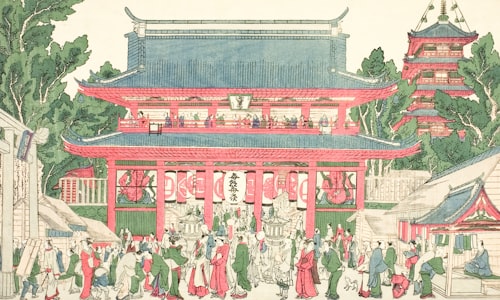18th Century facts
While investigating facts about 18th Century, I found out little known, but curios details like:
You were more likely to get a job if you had smallpox scars in the 18th century. The scars proved that you already had smallpox and could not pass it on to your employers.
Extinction was only accepted as a fact in late 18th century after Georges Cuvier, the father of paleontology, disproved the old theory that it was impossible for species to go extinct because God wouldn't wipe out a species he spent time creating for his Divine Plan.
In my opinion, it is useful to put together a list of the most interesting details from trusted sources that I've come across. Here are 50 of the best facts about 18th Century I managed to collect.
-
18th Century stereotype of the "lazy southerner" was caused by widespread hookworm infections, which caused poor southerners to be lethargic, malnourished, stunted, and mentally retarded.
-
In the 18th century John Harrison claimed that he could build a clock to keep time to within a second over 100 days; it triggered widespread ridicule at his time. The clock had been built to his exact specifications in 2015; it was declared the "most accurate mechanical clock"
-
The United States Constitution is the only constitution from the 18th century that's still in use.
-
Cats were kept on ships by Ancient Egyptians for pest control and it become a seafaring tradition. It is believed Domestic cats spread throughout much of the world with sailing ships during Age of Discovery(15th through 18th centuries).
-
95% of all Thoroughbred racehorses can be traced back to a single 18th-century stallion
-
Whipping Tom, the name given to two serial spankers in London in the 17th & 18th centuries. "On seeing an unaccompanied woman, he would grab her, lift her dress, and slap her buttocks repeatedly before fleeing. He would sometimes accompany his attacks by shouting "Spanko!""
-
the price of admission for a zoo in 18th century England was a dog or a cat -- they were fed to the lions.
-
Coffee is credited with helping to spark the Age of Enlightenment in the 17th and 18th century Europe. Before coffee was introduced to that part of the world, people often drank beer/alcohol throughout the day because it was safer than water. Coffee provided a safe alternative to alcohol.
-
Hellfire Clubs, 18th century social clubs, extant in UK, where men and women gathered to perform socially unacceptable actions while simultaneously mocking religion, satirically, in a time when it was blasphemous to do so.
-
In the 18th century many prominent voices were concerned by an 'epidemic' affecting young people whereby they were spending too much time reading books. It was diagnosed as 'a dangerous disease' called 'reading rage, reading fever, reading mania or reading lust.'

18th Century data charts
For your convenience take a look at 18th Century figures with stats and charts presented as graphic.

What is true about 18th century?
You can easily fact check it by examining the linked well-known sources.
You are a thief and a murderer: you have killed a baboon and stolen his face" was a common insult in the 18th century
18th Century Norwegian swashbuckler Peter Tordenskjold once ran out of ammo during a sea battle so he sent his enemy a letter thanking him for "a fine duel" and asking him to send more ammo so they could carry on. The two crews then toasted each other's health and went their separate ways. - source
Abram Gannibal was a black African-born Russian nobleman in the 18th century. Sold into slavery, he was eventually freed by Peter the Great and adopted into the Emperor's household as his godson. His great-great grandson is the celebrated author and poet Alexander Pushkin. - source
Macaroni' was an 18th century expression for fops who dressed in high fashion with tall, powdered wigs. The joke being made in "Yankee Doodle" is that Americans were allegedly naive enough to believe that a feather in the hat was a sufficient mark of a macaroni.
Because of a lucky genetic mutation happened in the 18th century, today 38 people in a small town in northern Italy don't suffer from cholesterol artery-clogging, making them virtually immune to heart disease and strokes. They all smoke, they eat like hell, and they don't care - source
The prototype of the chainsaw we are familiar with today in the timber industry was pioneered in the late 18th century by two Scottish doctors as a surgical tool to aid in the process of diffucult childbirth
During the 18th century, you could pay your admission to the zoo in London by bringing a cat or a dog to feed the lions.
There was an 18th-century racehorse named Potoooooooo. His name was originally Potatoes, but when his owner told the stable boy to write his name on a feed bin, he misheard it as "pot-eight-o's". The owner found it so funny that he kept it as the horse's name.
Pineapples were a status symbol in 18th century England. They were so expensive that you could rent them by the night and take them to parties with you.
Suicide candidates in 18th-century Denmark were afraid to take their own lives because they believed it would send them to hell. Instead, they resorted to killing other people to receive the death penalty and repented before execution, believing that doing so would send them to heaven.